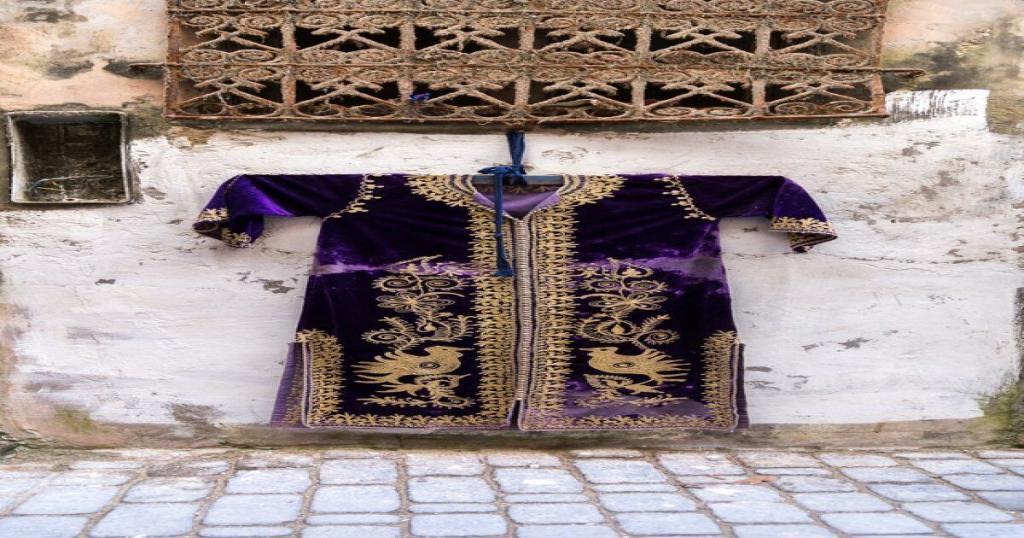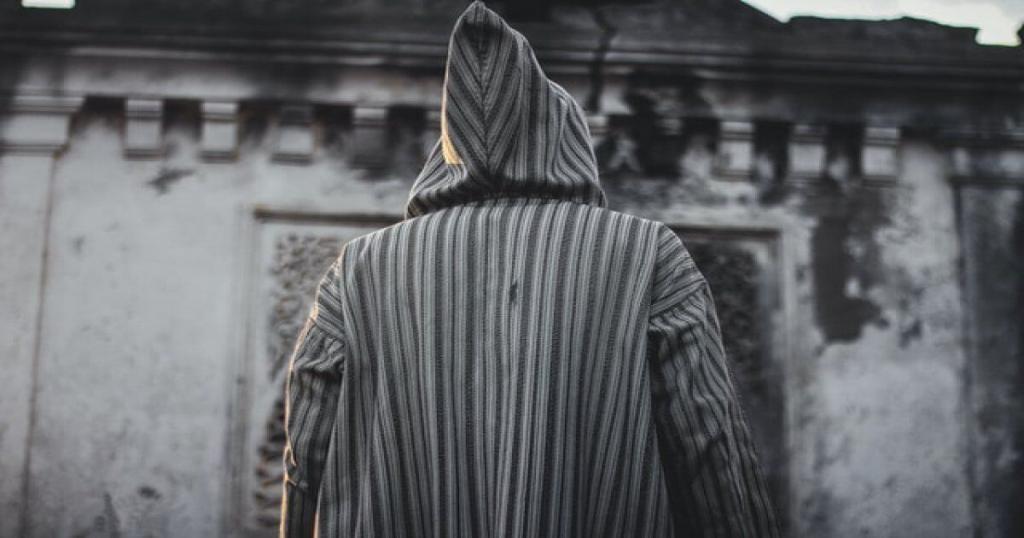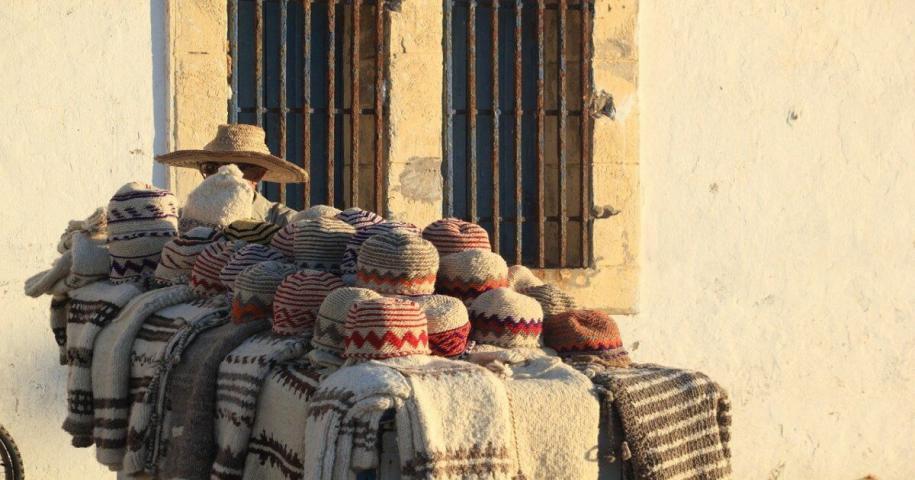The traditional clothes and national dresses in Morocco, be they male or female outfits are kept and preserved by Moroccans for centuries. This clearly shows how Moroccans are hanging on various traditional attires. Especially in weddings and religious events, old or young, men or women. There is no doubt that traditional clothing is an integral part of the Moroccan heritage. Definitely, heritage is one of the necessary ingredients for the construction of civilization.
In this article, Touring In Morocco will show you the most beautiful Moroccan traditional clothes and dresses that the people of Morocco wear at special events or even on normal days. In addition to that, we offer affordable Morocco tours for those who are willing to travel to Morocco to discover its colors and clothes.
Famous clothes and dresses in Morocco
Jabador
Originally, the Jabador is a simple outfit worn outdoors to shop at the market or in the souks. But nowadays, it can be a high-end outfit. Consisting of two pieces. A pair of pants and a long tunic that can be tailored, beaded, and jeweled. This Moroccan outfit is often worn by young women seeking a balance between tradition and modernity. The Jabador is sometimes preferred over the caftan during parties or baptisms. Because it is more practical and pleasant to wear… even by men.
The caftan
The caftan or Takchita appeared in the Maghreb from the 3rd century AD. Ancestral costumes dating from the Greco-Roman civilization. It has known through time several redesigns while keeping through the ages its specificity, namely its size providing great ease of movement.

Originally, the garment is expensive, only the sultans and their wives had the privilege to wear such outfits. Indeed, it took months to shape, embroider and bead by hand noble fabrics with gold and silver threads.
However, since the 21st century, the Caftan has been widely democratized thanks to less expensive versions. Perfect ceremonial dress, it is also worn by men.
The Djellaba
A real fashion phenomenon, the Djellaba is now as much appreciated by men as by… women. Originally, this official and traditional costume from the Muslim culture was – by the principle of modesty in reference to the Koran – worn by men. Then it was made with various fabrics according to the seasons and festivals.

Since then, the Djellaba has been feminized: it has become the most representative garment of the Moroccan woman as a symbol of elegance and lightness. Moreover, it is available in a wide range of styles: short and low-cut for women; bathing suit for babies; medium-length for men. Most of the time Moroccans wear it with slippers which creates the perfect combination.
The Gandoura
The Gandoura, a traditional men’s garment, mainly sold during the month of Ramadan or during Eid. There are two versions of this Moroccan attire. Firstly, the simple Gandoura, a long loose cotton dress with short sleeves. Secondly, there is the M’likh, two Gandouras with long sleeves superimposed. The latter is of much better quality, more elegant than the simple Gandoura because it is hand-sewn.
The Babouches
The Babouche or “Belgha” is made according to ancestral know-how. Very often, the leathers come from the tanneries of the Medina of Fes. Its patterns and shapes differ from one region to another. Even today, it remains the most worn “shoe” because it is light and practical, representing a whole art of living. People in Morocco design to be easily removed, it also allows natural ventilation of the foot. The Babouche, a symbol of time and reflection, is the opposite of the sports shoe which represents race and speed.
Traditionally, it is hand sewn by a worker who makes only one pair per day. There are two types of shoes. On the first hand, there is the Arab shoes with pointed tips for city dwellers. And on the second hand, the Berber shoes with square or round tips for country people. It remains essential for the adornment of weddings and religious festivals. The purists choose a bright yellow and preferably made in Fes.
The Tarbouche
The Fes or “Tarbouche of Fes” is a male headgear made of wool, almost always red, and which takes its name – as its name indicates – from the city of Fes. Rigid, conical, and high shaped, Moroccans wear it with traditional clothes and slippers on feast days.
Morocco traditional Sahrawi clothes
The Saharawis have no difficulty in performing any task, however complex, wearing their traditional clothing. One might think that these clothes would be a hindrance to their movements during the day. But this is not the case at all. The Sahrawis carry out their activities as normally as possible.
Men and women in the southern provinces have special clothing of various types and models. The man wears the Darâa while the woman officially wears the Melhfa.
The traditional costumes in the desert regions are comfortable and suitable for the desert, as they are designed to suit the hot and dry climate. Most of these garments are roomy and light and in summery, open colors that match the desert climate.

Characteristics of the Sahrawi’s traditional clothes in Morocco
In general, clothing for both sexes is characterized by modesty, decency, humility, dignity, good taste, and simplicity. The Sahrawi finds no problem working while wearing his traditional clothes, which might reflect a contradiction between the draggy dress and the flexibility that practical tasks require.
The inhabitants of the Sahara desert provinces are very attached to their traditional costumes passed down from one generation to another and reflect the rich heritage of the nomads of the region.
These traditional clothes of Morocco are among the most important cultural constituents of local society. A connotation of its distinctive cultural character, and at the same time a reflection of history, heritage, and customs. There is no doubt that the traditional dress and clothing culture are of particular importance in the society of the tribes of the Moroccan Sahara. Because they affect the feeling and passion. Indeed, Sahrawi clothing remains a characteristic of the family at the local level and is characterized by the simplicity of manufacture.
The design of the traditional costume has been affected by religion, climate, and civilization. For example, women hold on to the Melhfa because it corresponds to the instructions of the religion and customs, and habits of the region. And achieves its objectives of decency and modesty as a fundamental pillar of the Sahrawi Moroccan Bedouin community.
The Darâa
The Darâa is one of the popular costumes that the desert men wear. It is a wide tunic open on both sides. There is also a gap in the chest with a pocket called “Ellebna”. It comes in two colors: white or blue. In addition, there are the “Kchat” pants attached to thin leather belts, and then the “Stembel” pants. Baggy pants of the same color as the Darâa wide on the side of the buttocks and tapers in the direction of the middle of the leg. Its price starts at 300 DH.
The litham
Given its various uses and benefits, it is the most important piece of the components of a Sahrawi man, who use it in several tasks. The Sahrawi man uses the Litham to protect his head and face from the heat and can be used as a light sheet when sleeping in summer. Or even as a towel after ablutions to wash his face or hands. They also use it as a bandage for wounds, as a rope for tying camels, or drawing water with buckets from wells. Besides, Sahrawis sometimes use it as a basket when shopping, this in addition to its added and aesthetic value accompanying the wearing of the Darâa.
The Melhfa
It is a garment of about four meters long and its width is no more than 160 centimeters that the Sahrawi woman wears wherever she goes. However, the Melhfas are not all the same, there are those dedicated to festivals and ceremonies and those that they wear every day. Similarly, there is a distinction and difference between the Melhfa of an old Sahrawi woman and that of a young woman. While prices vary according to the quality of the fabric and are between 50 and 2,000 DH.
In the past, Sahrawi girls had a dress similar to a Darâa, composed of two pieces of two different colors, blue and black, with a single “braid”. Yet, at the age of maturity, the girl wears the Melhfa. However, the mutations that the local society has known have affected the latter. The young girls in Morocco opt more and more for colored traditional clothes instead of black, which dominated for several decades.


Leave a Reply